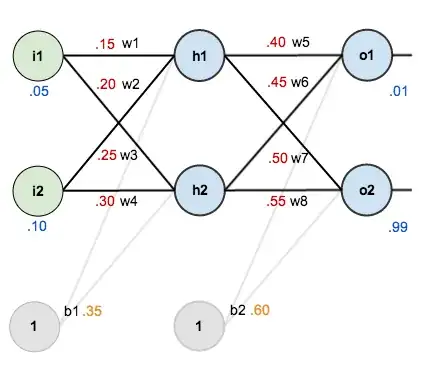Suppose we have the following neural network (in reality it is a CNN with 60k parameters):

This image, as well as the terminology used here, is borrowed from Matt Mazur
As is visible, there are two neurons in the output layer, namely o1 and o2. However, I do not have labels for these neurons. Rather, I have another neural network that evaluates this output layer and return one value that indicates the "goodness". As such, it is impossible to calculate the individual errors for o1 and o2, but it is possible to use aforementioned goodness as total error (i.e., the sum of the errors for o1 and o2). Thus, as I see it, every term in the following chain-rule formula can still be calculated:
 (And a similar formula for o2.)
(And a similar formula for o2.)
Is my understanding as described above correct? And, if yes, would this be implemented in Keras simply as follows?
def custom_loss(y_true, y_pred):
return loss_model(y_pred)
main_model.compile(optimizer="adam", loss=custom_loss)